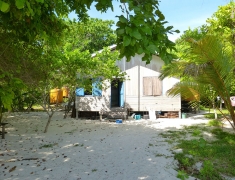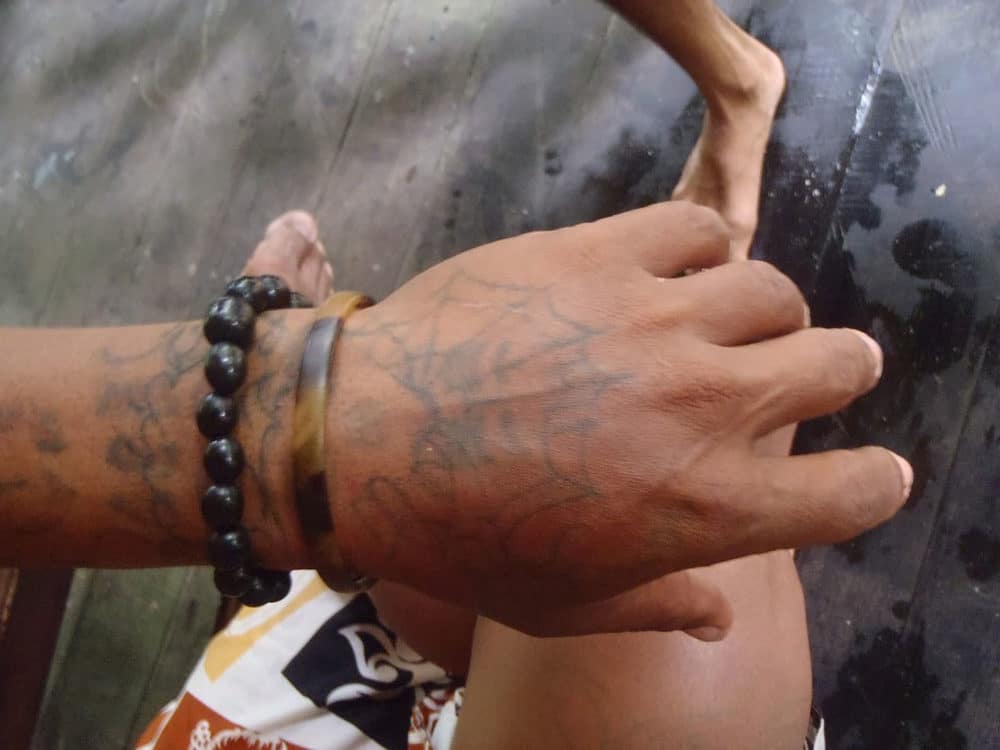Even nowadays, there are places on Earth which cannot be entered without permission of the local authorities. I have had an opportunity to become a volunteer in an organization called Konservasi Biota Laut Berau. During my travels around Indonesia, I visited islands near Borneo where a turtle rescue center is located. The organization fights for saving lives of endangered turtle species. The green sea turtle is one of them. Here goes the story of human effort to save these endangered species that were on this planet when the dinosaurs were still alive.
For the first time, I met Hanka Svobodová at a traveling festival, some time before my trip to New Zealand. She gave a lecture on her work in Indonesia, where she is actively involved in rescuing the green sea turtle. Immediately, I knew that that was what I wanted to do, so we exchanged contacts with Hanka. After two years of exchanging messages, I finally landed on Borneo in Indonesia. Having taken care of all the formalities at the local authorities’ offices, I got the permission to travel to two islands, Mutaha and Bilang-Bilangan, with Hanka. Before departing, Hanka pointed out that the islands are so small that even Google Earth is not able to detect them (you can go all around the island in a half an hour). They are natural reserves for sea turtles, untouched by urban society.
I had a great time on the islands, I almost felt like Robinson Crusoe.
All facilities were located in a small wooden cabin with a kitchen and an emergency toilet. Next to it, there were containers for collecting rainwater which was drinkable after boiling. Once a week, food supplies were delivered to the island in a boat, so we went fishing quite often. Electricity from a huge generator was available only for a few hours a day, and there was no signal on the island. I can’t imagine there could be any place closer to paradise nowadays. It was incredible to become a part of nature and just blend with it.
Why the turtle is among endangered species
The population of all seven sea turtle species is in rapid decrease, with 4 of them being critically endangered, and with the remaining 3 being in danger of extinction. The main reasons for that are:
TURTLE EGG COLLECTING – the locals collect and eat turtle eggs and turtle meat (from trapped female turtles), in spite of the fact that it is illegal. However, if people collect eggs in one area for a long period of time, there are no new baby turtles born and no female turtles to lay eggs. Not many people are aware that turtles, as long-lived animals, are exposed to pollutants in the ocean on a long-term basis. Female turtles get rid of the pollutants by discharging them into their eggs. Consumption of such eggs might cause heavy metal poisoning or mercury poisoning; there was already a number of documented deaths due to such poisoning.
PREDATORS – adult individuals have no natural predator, except for humans. Turtle eggs are more endangered, as they get eaten by rats, monitor lizards, pigs, dogs and other animals. Baby turtles are no less threatened, as they are included in a diet of such animals as predatory fish, birds, crustaceans, or cephalopods.
Sale of turtle eggs (source: morskezelvy.cz)
bracelet from tortoiseshell (source: morskezelvy.cz)
FISHING – even though turtles do not tend to be fishermen’s targeted catch, they can easily weave into their fishing nets or fishing lines. Turtles breathe oxygen, so if they stay there, they can easily drown.
SEA POLLUTION – toxic pollution can increase chances of diseases and infections among turtles. It lowers their immunity system while fighting with parasites and viruses. What also threatens them are increasing amounts of waste, such as plastic waste, fishing nets, glass, and other objects in which they could get stuck or which they could eat.
DECREASING NUMBER OF BEACHES SUITABLE FOR LAYING EGGS – the development of tourism causes a lack of empty beaches where turtles could lay eggs. Erosion and global warming are also at fault; they also cause rising oceans which leads to flooding of the turtle broods. Immoderate illumination of the beaches is also a huge problem because it confuses baby turtles hatching from eggs instinctively heading to the brightest spot.
Many of those dangers are natural for the turtle, but people remarkably affect their intensity.
Egg-laying
An adult turtle lives in the ocean for its whole life and the only reason they approach the land is to lay eggs. Female turtles go to the shore at night only, looking for a place to lay eggs. During one breeding season, lasting three months, a female turtle is able to lay up to seven broods of one hundred eggs per each.
 In Czech, there is a well-known idiomatic phrase “to cry like a turtle.” While laying eggs, turtles actually cry. The reason being that there tends to be a lot of sand that gets in their eyes while they dig holes.
In Czech, there is a well-known idiomatic phrase “to cry like a turtle.” While laying eggs, turtles actually cry. The reason being that there tends to be a lot of sand that gets in their eyes while they dig holes.Hatching of baby turtles
After approximately sixty days, baby turtles start hatching. They dig out of the sand at the same time, which helps them to get to the surface. The hatching takes place at night, so that they do not get burn from the sand. Each young turtle tries to get to the sea as fast as it can, using the horizon as a point of orientation because it tends to be the brightest spot after sunset.
Turtles fighting for their lives
Baby turtles have the so-called “yolk sack” on their bellies which supplies them with nutrition for the next two days. During this period, they try to swim as far as possible to reach safe waters because they have to avoid many predators, such as birds, crabs, fish, and, of course, humans.
 Only one turtle in a thousand survives to adulthood. Turtles reach sexual maturity by the age of 15; they return to the beach where they were born to breed and lay eggs. Scientists are still arguing about how it is possible that they are able to find their way back after all that time.
Only one turtle in a thousand survives to adulthood. Turtles reach sexual maturity by the age of 15; they return to the beach where they were born to breed and lay eggs. Scientists are still arguing about how it is possible that they are able to find their way back after all that time.Turtle rescue centers are not actually helping
The situation in Indonesia reached the point of crisis, so the government decided to establish a number of rescue centers for turtles. In practice, this means that eggs are removed to a safety zone where turtles can hatch without being threatened. Then, the babies are placed to a pool, where they feed them, so that they can be released when they grow up. It might sound beautifully, however, there is a number of BUTs. These good intentions can cause damage as well.
In actuality, the young turtles are kept in a sweetwater pool and preservationists themselves have no idea what they should feed them. The turtles are hungry, so they start gnawing each other’s limbs, they are disoriented, losing their instincts. It is essential for a baby turtle to hatch on a beach because it needs to know where to come back when it grows up. Turtles reared in such centers often die early. Although, they needn’t to because it could have been done differently, way more effectively.
Turtles in captivity with bitten fins (source: morskezelvy.cz)
Help that does make sense
Preservation is done in two ways. The first way is the active education of and information spread to both tourists and the locals, concerning the endangerment of turtles. Hanka creates and prints leaflets, pexeso and other games featuring turtles. She gives talks at local schools. Her goal is to teach the young generation to care about the endangered species. The locals sell turtle eggs for money and Hanka is aware that it is essential to find them some other source of income. We tried making ornamental souvenirs from coconuts, animal-shaped jewelry, coconut lamps. The advantage of coconut shells is that they are easily accessible there.
The second way of helping turtles lies in the protection of their natural habitat by founding natural reserves on the islands of Indonesia, for example. Concerning the fact that there are no people living there, turtles can peacefully lay eggs and breed there. The conservationists living on the island are monitoring the broods, or remove the eggs to safer places. Simultaneously, they look after the baby turtles on their way to the sea. Baby turtles sometimes get stuck and can’t keep going. An important part of the work on the islands is also collecting waste. Every day, the sea washes up an unbelievable amount of waste, such as plastic, glass, polystyrene, etc. The work seems endless, but it does make sense.
5 Tips on How to Be a Responsible Tourist
Do not eat turtle eggs
Do not buy tortoiseshell
While turtle-watching, do not illuminate the turtles with the white light (use the red one only)
After sunset, close the curtains or blackout the windows
Do not sponsor such rescue centers that keep turtles captive for no particular reason

























Leave A Comment